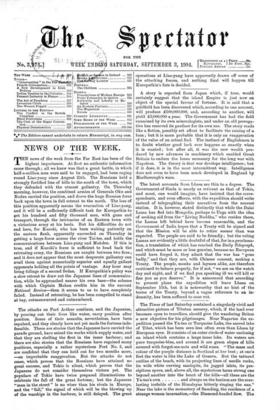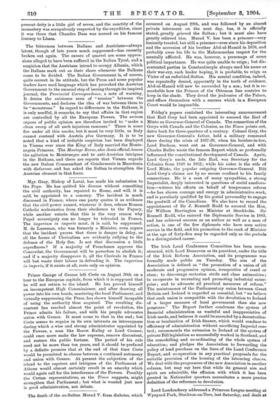The Times of last Saturday contained a singularly vivid and
attractive picture of Tibetan scenery, which, if the land ever becomes open to travellers, should give the wandering Briton a new objective for his pilgrimages. Near Nagartse the ex- pedition passed the Yu-tso or Turquoise Lake, the sacred lake of Tibet, which has been seen less often even than Lhasa by European eyes. It consists of an outer circle of water enclosing an island which contains a large inner lake. Its waters are pure turquoise-blue, and around it are green slopes of hills covered with forget-me-note and wild roses. "The mass and colour of the purple distance is Scotland at her best ; at one's feet the water is like the Lake of Geneva. But the tattered outline of the beach, with its projecting lines of needle rocks, its wide white curving sandspits, its jagged islets, its pre- cipitous spurs, and, above all, the mysterious tarns strung one beyond another into the heart of the hills—all these are the Yu-tso's own and always on the horizon are the ever- lasting icefields of the Himalayas bitterly ringing the sun." Near the lake is the monastery of Samding, the residence of a, strange woman incarnation,—the Diamond-headed Sow. The
present deity is a little girl of seven, and the sanctity of the monastery was scrupulously respected by the expedition, since it was there that Chandra Dass was nursed on his famous journey to Lhasa.







































